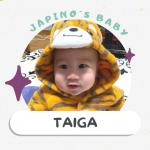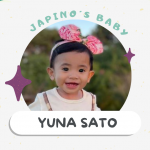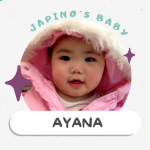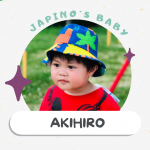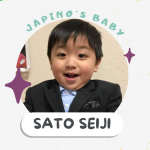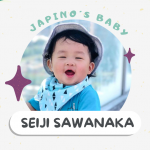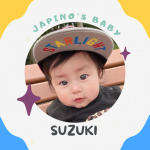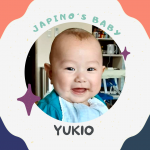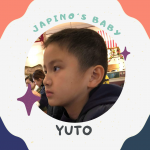Zannen dakedo (残念だけど, it’s sad to say), summer is winding down, and all we’ve got to look forward to now is the onslaught of taifū (台風, typhoons), landing one after the other as the kisetsu (季節, season) shifts toaki (秋, autumn).
And as the air cools off, there’s the sense of biiru no nomisugi (ビールの飲みすぎ, having drunk too many beers), okane no tsukaisugi (お金の遣いすぎ, blown too much cash) and not having attended to one’s hiyake (日焼け, sunburn) — which, among Japanese women, practically counts as a felony.Naze bihaku kea o shinakatta no? (なぜ 美白ケアをしなかったの? “Why in the blazes didn’t you do the whitening treatment?”) scolded my friend Manami, balefully eyeing the blisters on my shoulders, ready to throw me in a vat of lotion and put me behind bars until winter.
The summer was a scorcher all over this semai shimaguni (狭い島国, cramped island nation) and the majority of Japanese women were forced to spend a small fortune on whitening skin care kosume (コスメ, cosmetic products) and hiyake-dome guzzu (日焼け止めグッズ, “sun-avoidance goods”), the foremost of which are the long black gloves last seen on Morticia in “The Addams Family.” Then there are the oblivious females — usually under 12 years old — who think it’s OK to go swimming in the sea without sunscreen and lie baking on the sand in a post-en’ei (遠泳, long-distance swimming) stupor.
I will pay for my sins, chided Manami, in the form of shimi (シミ, blotches) and shiwa (シワ, wrinkles) galore. But hey, jinsei wa ichido kiri (人生は一度きり, “You only live once”) and it’s another 300 days until rainen no natsu (来年の夏, next summer) rolls around.
Having said that, the Japanese summer is getting hotter every year thanks to kikō hendō (気候変動, climate change) and worsening CO2 emissions. A record-breaking number of necchūshō (熱中症, heat stroke) victims were carted off to hospitals, and in inner-city Tokyo, ambulance sirens were sounding loud and strong at intervals of what seemed like every few minutes.
It didn’t used to get this hot in Tokyo, not even with the hiito airando genshō (ヒートアイランド現象, urban heat-island phenomenon) of the past decade, but now summer temperatures over 33 degrees have become the norm.
That’s not as bad as in cities such as Maebashi in Gunma Prefecture and Kumagaya in Saitama — officially known as the warmest spots in the Kanto area. It has become a kōrei gyōji (恒例行事, customary event) for the media to rush to these two cities — ignored for most of the year save for two weeks in the summer — as soon as the Kishōchō (気象庁, Japan Meteorological Agency) declares tsuyu ake (梅雨明け, the end of the rainy season). TV reporters set up thermometers on busy intersections in Maebashi and Kumagaya, watch the mercury rise and proclaim with glee that, yes, the heat has just hit 39 degrees Celsius! Viewers are advised to stay indoors and remember to komamena suibun hokyū (こまめな水分補給, imbibe liquids frequently) — the slogan of the season.
And then there’s the lingering zansho (残暑, residual late-summer heat) to contend with just as everyone starts wearing their suit jackets again. At least during the height of the heat it was acceptable for businesspeople to forego the jacket in the name of “Cool Biz.” But after o-Bon (お盆, the few days around Aug. 15 when many Japanese commemorate their dead and ancestors), everyone starts wearing them again, though temperatures are still high.
On the other hand, late summer brings zansho mimai (残暑見舞い, “lingering heat consolation”) — in the form of nomikai (飲み会, drinking parties), matsuri (祭り, festivals) and ennichi (縁日, outdoor stalls). Donning a yukata (浴衣, casual kimono) and engaging in these activities constitutes one of those times when you’re glad to be a Japanese.
For the most part, though, the Japanese summer can be described in three phrases: atsui (暑い, hot), shikke ga takai (湿気が高い, humid) and yasumi ga torenai (休みがとれない, can’t take days off). It’s probably for the best: With the triple World War II kinenbi (記念日, anniversaries) of the atomic bombing of Hiroshima (Aug. 6), Nagasaki (9th) and Japan’s surrender (15th) falling in the same month, we’re probably not in the mood to take long vacations or feel too comfortable. There’s the obligatory o-haka-mairi(お墓まいり, visiting of graves) of family and friends, too, which involves tidying up gravesites, washing the tombstones, putting up fresh flowers and making conversation with (live) relatives you hardly know.
Summer is when the Japanese commune with family, ghosts and an ignoble wartime past. Emotions run high at this time, which is probably why so many people keep up with the Kōshien (甲子園, National High School Baseball Championship, played at the Koshien stadium) games on TV and identify with the players battling it out on the field. The games are held in the spring as well, but they don’t achieve the same level of chi to ase to namida (血と汗と涙, blood, sweat and tears) glory as in the summer.
Speaking of which, while atsui (暑い) means just hot, another atsui (熱い) means real heat, and heightened passion. The two characters combined in the word shonetsu (暑熱) refer to a truly sizzling heat. I guess that’s hot enough.








